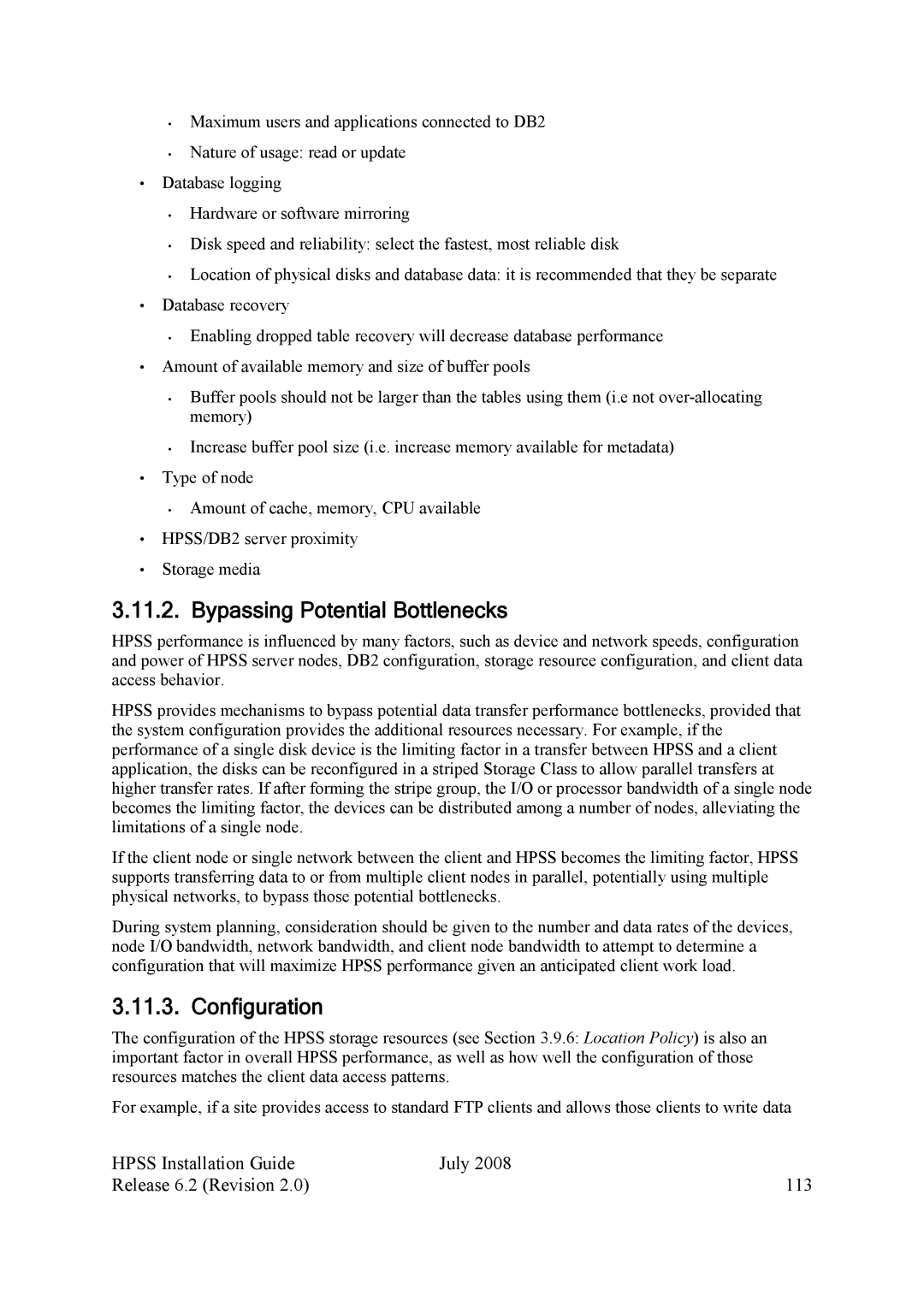·Maximum users and applications connected to DB2
·Nature of usage: read or update
•Database logging
·Hardware or software mirroring
·Disk speed and reliability: select the fastest, most reliable disk
·Location of physical disks and database data: it is recommended that they be separate
•Database recovery
·Enabling dropped table recovery will decrease database performance
•Amount of available memory and size of buffer pools
·Buffer pools should not be larger than the tables using them (i.e not
·Increase buffer pool size (i.e. increase memory available for metadata)
•Type of node
·Amount of cache, memory, CPU available
•HPSS/DB2 server proximity
•Storage media
3.11.2. Bypassing Potential Bottlenecks
HPSS performance is influenced by many factors, such as device and network speeds, configuration and power of HPSS server nodes, DB2 configuration, storage resource configuration, and client data access behavior.
HPSS provides mechanisms to bypass potential data transfer performance bottlenecks, provided that the system configuration provides the additional resources necessary. For example, if the performance of a single disk device is the limiting factor in a transfer between HPSS and a client application, the disks can be reconfigured in a striped Storage Class to allow parallel transfers at higher transfer rates. If after forming the stripe group, the I/O or processor bandwidth of a single node becomes the limiting factor, the devices can be distributed among a number of nodes, alleviating the limitations of a single node.
If the client node or single network between the client and HPSS becomes the limiting factor, HPSS supports transferring data to or from multiple client nodes in parallel, potentially using multiple physical networks, to bypass those potential bottlenecks.
During system planning, consideration should be given to the number and data rates of the devices, node I/O bandwidth, network bandwidth, and client node bandwidth to attempt to determine a configuration that will maximize HPSS performance given an anticipated client work load.
3.11.3. Configuration
The configuration of the HPSS storage resources (see Section 3.9.6: Location Policy) is also an important factor in overall HPSS performance, as well as how well the configuration of those resources matches the client data access patterns.
For example, if a site provides access to standard FTP clients and allows those clients to write data
HPSS Installation Guide | July 2008 |
Release 6.2 (Revision 2.0) | 113 |
